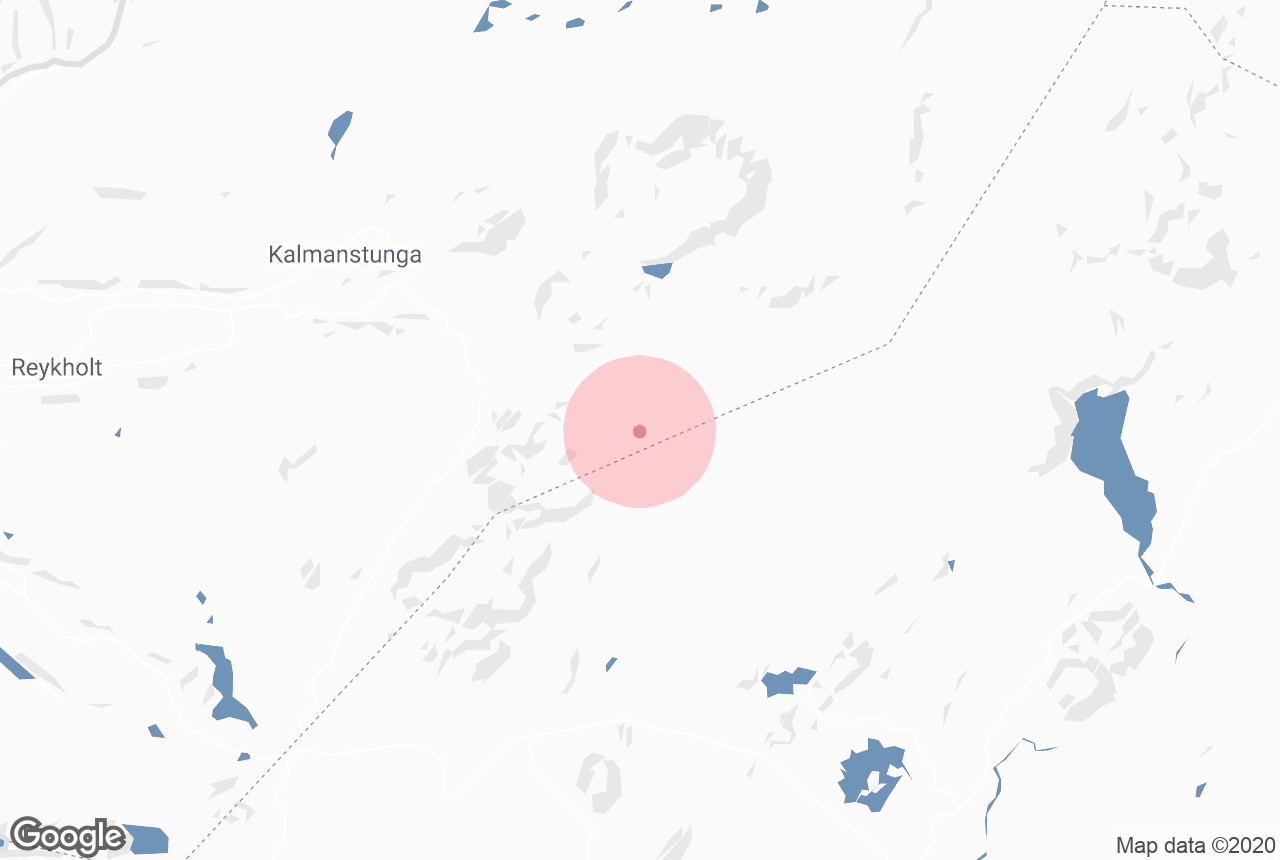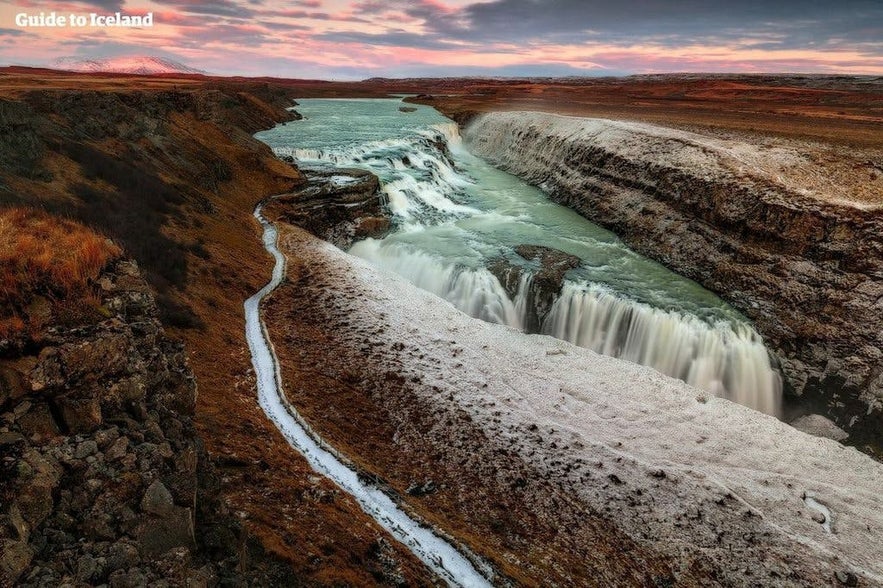Den mægtige Langjökull, "den lange gletsjer", er den næststørste gletsjer i Island med et areal på 935 kvadratkilometer. Langjökull er den mest populære gletsjer i Island, når det gælder jeep- og snescooterture, og det er også muligt at stå på ski og vandre her.
Langjökull ligger kun en times kørsel fra Reykjavik, så du kan leje en billig bil og selv køre derhen og f.eks. tage på snescootertur. Du kan også tage med på udflugter til Langjökull for at opleve gletsjeren og de mange eventyr, den byder på. Hvis du er interesseret i gletsjere, kan du gå ind på dette link og se alle gletsjerturene i Island. Læs videre for at lære alt, hvad du behøver at vide om Langjökull-gletsjeren.
Derfor kan du stole på vores indhold
Guide to Iceland er den mest pålidelige rejseplatform i Island, der hjælper millioner af besøgende hvert år. Alt vores indhold er skrevet og gennemgået af lokale eksperter, der kender Island ud og ind. Du kan stole på, at vi giver dig præcise, opdaterede og pålidelige rejsetips.
Højlandsruter
Langjökull ligger i højlandet, og to hovedveje i højlandet, som forbinder det nordlige og det sydlige Island, ligger langs med den.
Kaldidalur-vejen strækker sig fra Þingvellir Nationalpark mod nord til Húsafell. Kjalvegur-vejen ligger øst for Langjökull og vest for Hofsjökull-gletsjeren og starter nær det berømte Gullfoss-vandfald i syd og går gennem det smukke geotermiske område Hveravellir i nord.
Langjökulls landskab
Langjökull er omkring 50 kilometer lang og op til 20 kilometer bred, og isen er omkring 580 meter dyb, når den er tykkest. Gletsjeren når sit højeste punkt i sin nordligste del, som kaldes Baldjökull, og som hæver sig omkring 1.450 meter over havets overflade.
Gletsjeren ligger over et massiv af hyaloklastitbjerge. Toppen af disse bjerge kan ses visse steder på gletsjeren. Den skjuler også mindst to aktive vulkanske systemer, hvis calderaer er synlige fra luften.
Det mest kendte af disse systemer driver det geotermiske område Hveravellir øst for Baldjökull. I øst ligger også Kjalhraun-lavafeltet, som blev dannet for ca. 7800 år siden.
Nordvest for gletsjeren ligger et andet system, som skabte det enorme Hallmundarhraun-lavafelt, hvorigennem Hvítá-floden løber i retning af Gullfoss-vandfaldet. I området ligger også Islands længste lavagrotte, den fascinerende Surtshellir.
Sydvest for Langjökull ligger Presthnúkur-lavafeltet, hvis sprækker kryber ind under isen. Syd for gletsjeren ligger Lambahraun-lavafeltet, og endnu længere mod syd ligger Skjaldbreiðarhraun-lavafeltet og Skjaldbreiður-skjoldvulkanen.
Sammenlignet med andre regioner i Island anses området for at være relativt roligt med kun 32 udbrud i de sidste 10.000 år.
Ind i gletsjeren
Nær Langjökulls højeste tinder findes en menneskeskabt istunnel, som er et sandt syn for enhver besøgende, der kommer forbi gletsjeren. Tunnelen er designet og konstrueret af geofysiker og præsidentkandidat Ari Trausti Guðmundsson og giver besøgende mulighed for at udforske indersiden af en gletsjer uden at skulle komme til Island midt om vinteren for at få en chance for at se de mindre pålidelige isgrotter.
Gæsterne krydser under Langjökulls tykke iskappe, oplever den levende blå farve indeni og får et indblik i gletsjerens skønhed, dannelse og processer. Det er det eneste sted i verden, hvor dette er muligt. "Into the Glacier"-ture kombineres ofte med adventure-aktiviteter som f.eks. snescooterkørsel.
Gletsjere i området
De gletsjere, der ligger tættest på Langjökull, er Eiríksjökull, som skjuler det højeste bjerg i det vestlige Island, og Þórisjökull. Hrútfellsjökull ligger også på østsiden af Langjökull.
Mellem Þórisjökull og Geitlandsjökull ligger en dal, der hedder Þórisdalur. Ud over den fantastiske udsigt spiller den en fremtrædende rolle i islandske folkeeventyr; den fredløse Grettir den Stærke i Grettis Saga skal f.eks. have boet her en vinter.
Langjökull og Den Gyldne Cirkel
Islands mest populære sightseeingrute, Den Gyldne Cirkel, ville ikke være mulig uden Langjökull-gletsjeren; ingen af de tre ikoniske steder ville eksistere i deres nuværende tilstand uden den smeltende is.
Gullfoss-vandfaldet er det mest åbenlyse eksempel på dette. Floden Hvítá, der løber ud i det, er en gletsjerflod, der kommer direkte fra Langjökull; iskappens omfang antydes af den store mængde vand, der falder her hvert sekund.
De varme kilder ved Geysir forsynes med vand fra undergrunden. Smeltevand fra Langjökull strømmer ind i de omkringliggende lavamarker, som har en meget porøs klippe, og løber i en underjordisk flod til det geotermiske område, hvor det kommer ud af de naturligt dannede åbninger.
Selvom Þingvellir stadig ville have sin nationalpark- og verdensarvsstatus uden Langjökull, som den fik for at være det oprindelige sted for det, der nu er det længstvarende repræsentative parlament i verden, ville den være betydeligt mindre smuk.
Der findes mange kilder i hele parken, som også er dannet af gletsjerens underjordiske smeltevand. På grund af den lange filtreringsproces fremstår vandet som noget af det klareste naturligt forekommende vand i verden.
Silfra-kløften er derfor det bedste sted at snorkle og dykke i landet og rangeres konsekvent som et af de ti bedste steder for sådanne aktiviteter i verden.











